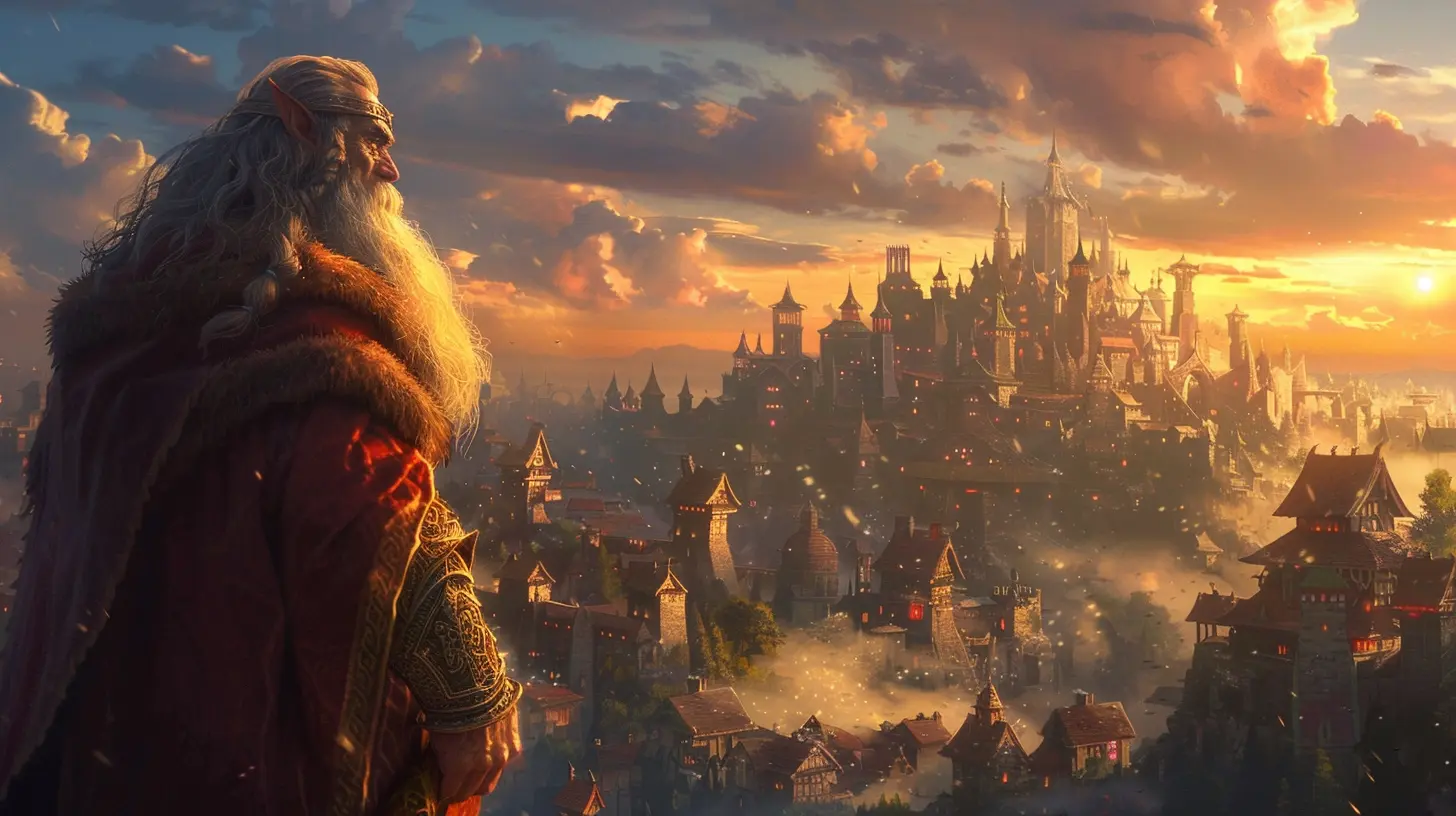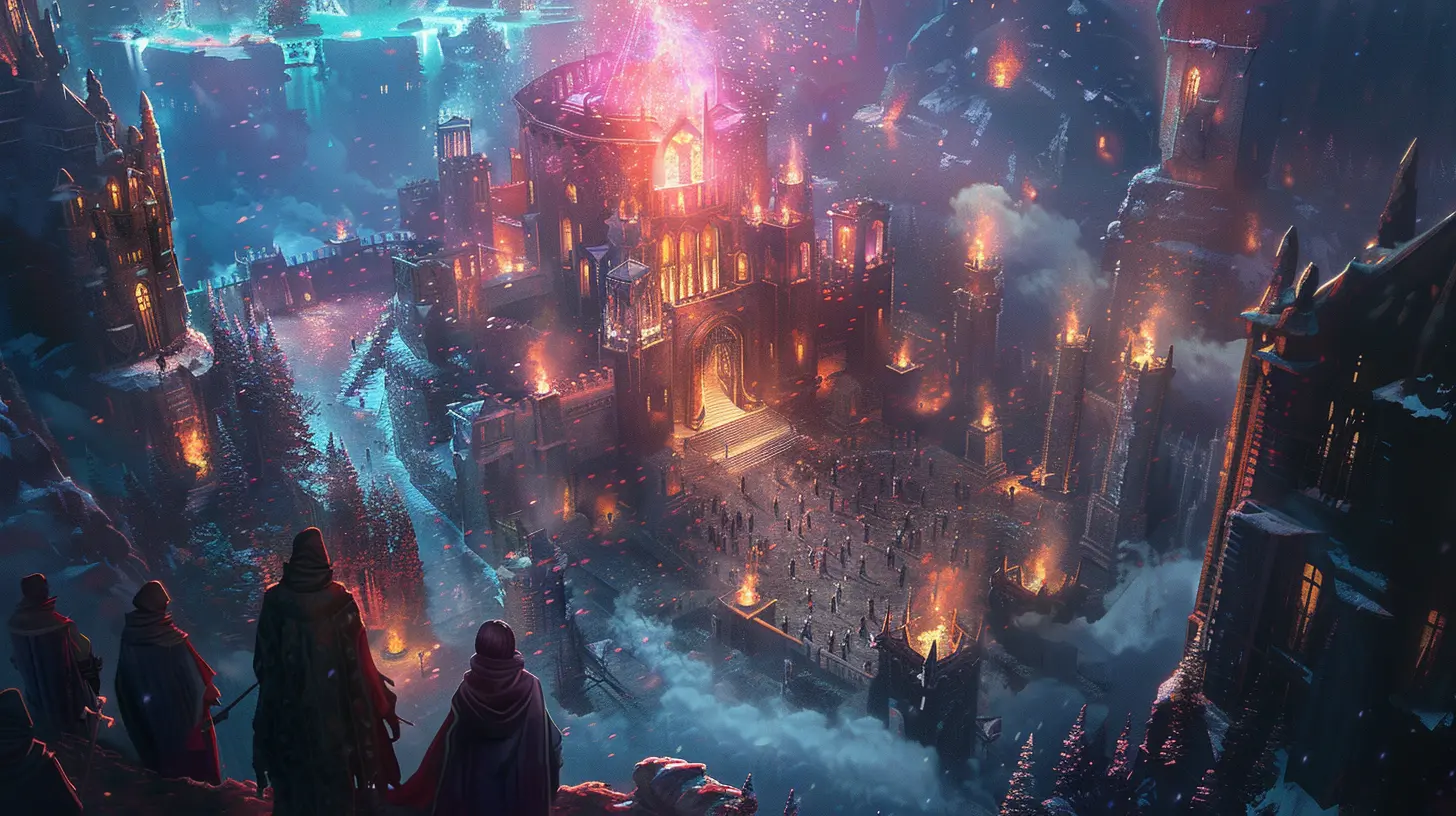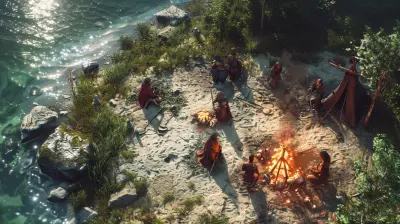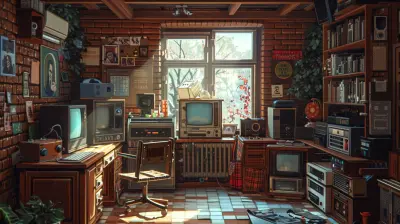Building a Community: Social Aspects of Free-to-Play Games
31 July 2025
There’s something oddly magical about diving into a free-to-play (F2P) game. One moment, you’re minding your own business, just trying to grind some XP or level up that pixelated wizard. The next? You’re knee-deep in a wildly active Discord chat, scheduling raid times with someone named “xXDragonDaddy420Xx” from halfway across the globe. Yup. That’s the power of community in free-to-play games.
And you know what? That social glue is the secret sauce that keeps players coming back, even when the “free” part starts feeling a bit... well, “freemium.”
So let’s crack this egg wide open and take a look at the warm gooey center of online gaming communities – the social life, friendships, rivalries, and bromances that bloom in free-to-play games. Grab your headphones, hydrate, and let’s talk about building a community in the world of F2P.
The Free-to-Play Formula: More Than Just No Price Tag
Free-to-play doesn’t just mean you don’t shell out cash on Day One. It means accessibility. No money? No problem. These games welcome everyone — from broke college students to stealthy 50-year-old dads disguised as warrior elves.And because the entry barrier is practically non-existent, thousands — heck, millions — of players can jump in, no wallet required. That massive reach? It creates fertile ground for social connection. These games aren’t just games. They're digital mayhem mixed with virtual hangouts, akin to online theme parks with fewer churros and significantly more fireballs.
So why do people stick around after the novelty wears off?
Two words: the people.
Chat Boxes, Guilds, and Clans – The OG Social Tools
Let’s be honest here — the in-game chat boxes were the original social media. Before Facebook groups or Reddit threads, players were typing “LFG” (Looking for Group) faster than they could say “PvP.”Every F2P game has its version of social connectivity baked right in:
- Text Chat: Whether it’s global chat, team chat, or private messages, a lot of social spark happens right here.
- Guilds and Clans: These are your ride-or-die homies. From weekly clan wars to running daily missions, guilds forge loyalty faster than a high school sports team.
- Voice Chat: This is where things get hilariously real. Hearing someone rage about lag mid-battle or scream in victory? Absolutely priceless.
Let’s not forget how these systems transform randoms into regulars. Someone who helped you out of a tough dungeon three weeks ago is now your best gaming buddy, and you're tagging each other in memes daily.
Events and Seasonal Mayhem – How Devs Fuel the Social Fire
Game developers are clever little social engineers. They know keeping players online means giving them a reason to log in — together. That’s where live events, seasonal missions, and timed collabs come in.Picture this: You log in and find out that it’s “Pumpkin King Fest” in your favorite F2P RPG. There’s a whole new spooky raid, limited-time loot, and a leaderboard filled with familiar usernames. You’re suddenly very motivated to team up and tackle those missions… not just for the rewards but because your clan buddies are already talking strategy.
Seasonal events do more than dress up the UI with snowflakes or jack-o’-lanterns — they drive player engagement and spark spontaneous interaction. Nothing brings people together like panicking over a timed boss battle.
From Strangers to Squad Goals: Why Relationships Matter
Here’s something no one talks about enough: some of the most genuine, long-lasting friendships started with one person healing another in the middle of a chaotic boss fight.F2P games are the perfect backdrop for digital relationships. And no, not just romantic ones (though yep, gamer couples exist too). We’re talking real connections — friends who play together every evening, support each other through tough quests and even tougher real-life situations.
There's a certain bond formed when you're both up until 4 AM farming for rare loot or strategizing for a guild war while one of you is three energy drinks deep.
It's not rare to hear stories of people flying across countries to meet their gaming friends IRL. Free-to-play games aren’t just free entertainment. They’re digital campfires around which people gather, connect, and sometimes even fall in love.
Toxicity vs. Positivity: The Double-Edged Sword of Online Communities
Let’s not sugarcoat this — not every gaming community is full of sunshine and GG’s.Free-to-play games, because of their low entry barrier, often get flooded with all types of players. And yeah, some of them are trolls. Add in competitive leaderboards, loot envy, and salty defeat, and you've got yourself a potentially explosive social cocktail.
But it’s not all bad, not by a long shot.
Most games now have systems to foster healthier communities — from in-game reporting tools and muting options to “commendation” systems that reward good behavior. And then there are the players who take it upon themselves to be the community MVPs — the helpful ones who guide newbies, mediate fights, and create positive vibes.
So yes, toxicity exists, but so does camaraderie. And often, the latter shines brighter and lasts longer.
Community-Driven Content: How Players Shape the Game
Players aren’t just participants in F2P games — they’re co-creators. Ever notice how some games have forums filled with fan art, guides, memes, and user-created tournaments?Yeah, that’s the community at work.
Here’s how it goes down:
- Fan Art & Memes: If a character gets nerfed, expect a flood of spicy reaction memes within the hour.
- User Guides and Wikis: Veteran players love showing off their game wisdom by creating how-to guides, build suggestions, and walkthroughs.
- Tournaments: Some of the biggest eSports tourneys started as community-run events. Passion breeds competition, after all.
F2P developers often tap into this creative vein — hosting art contests, spotlighting fan creations, or even incorporating community feedback into game updates. When players feel heard and valued, it only strengthens the bond.
Streaming and Content Creation – The New Social Arena
Gaming isn’t just about playing anymore. It’s also about watching someone else play while yelling encouragement (or roasting their terrible aim) in Twitch chat.Free-to-play games have exploded on platforms like Twitch and YouTube. Streamers build their own mini-communities within these games, and viewers feel like part of the action even if they haven’t played a single match.
Plus, content creators often serve as liaisons between developers and players — breaking down updates, testing builds, and starting discussions. Their influence turns solitary gaming into a group experience, even asynchronously.
Streaming is like pulling up a virtual couch and passing the controller around. Just with a global audience.
Cross-Platform Gaming: Goodbye Walls, Hello Larger Communities
Remember the dark ages when your PS4 friends couldn’t squad up with your PC crew? Not anymore. Cross-platform play is kicking down those walls, and F2P games are leading the charge.Games like Fortnite, Warframe, and Genshin Impact let you play across devices, and that’s a big damn deal. It means your cousin on mobile can join your Xbox squad without a hitch. The more seamless the access, the bigger the community.
Cross-platform isn’t just convenience — it’s community growth on steroids.
Discords, Forums & Fan Pages: The Real MVPs of Game Communities
Let’s face it — sometimes the best part of the game isn’t even in the game.Every popular F2P title has its own ecosystem of fan-run Discord servers, Facebook groups, Reddit threads, and even TikTok meme accounts. These platforms let players bond over more than just gameplay — they share experiences, inside jokes, screenshots, and, of course… complaints.
These out-of-game hubs are perfect for keeping the hype alive, especially between updates or events. They also help new players ease into the scene and let veterans show off their priceless knowledge (and skins, let’s be real).
The game might be the spark, but these communities? They’re the wildfire.
Tips for Building and Growing Your Own Gaming Community
Thinking of spinning up your own guild, Discord channel, or fan page? Do it! But here’s what’ll make it work:1. Be Consistent – Whether it's daily guild activities or regular content posts, keep the heartbeat steady.
2. Stay Inclusive – No one's got time for gatekeeping. Be welcoming to noobs and veterans alike.
3. Set the Vibe – Encourage positivity. A toxic-free community is gold.
4. Engage Often – Polls, giveaways, shoutouts—let your community know you care.
5. Celebrate Wins – Whether it's in-game achievements or life updates, share the love.
Communities don't build themselves. They grow from a mix of shared goals, mutual respect, and memes — lots of memes.
Final Thoughts: More Than Just Pixels
At the end of the day, free-to-play games are digital playgrounds — but what keeps us logging in day after day is more than just flashy skins or login rewards.It’s the people.
The social aspects of F2P games are the invisible threads that turn a game into a lifestyle, a hobby into a second home, and strangers into friends. Whether it’s through guild drama, shared victories, or those post-midnight vent sessions, these games give us something truly priceless:
Connection.
So next time someone scoffs at your hours logged in a free game, just smile and say, “I’m not just playing. I’m building a community.
all images in this post were generated using AI tools
Category:
Free To Play GamesAuthor:

Luke Baker
Discussion
rate this article
2 comments
Kate Erickson
Great insights on the social dynamics of free-to-play games! Building a strong community enhances player engagement and retention, proving that a vibrant social environment can be just as crucial as gameplay mechanics for long-term success.
November 18, 2025 at 4:15 AM

Luke Baker
Thank you! I'm glad you found the insights valuable. A thriving community truly is key to player engagement and retention in free-to-play games.
Katie Black
“Who knew free-to-play games could double as social gatherings? It’s like the virtual equivalent of a coffee shop, minus the caffeine jitters—just watch out for trolls hiding under the gaming bridge!”
August 5, 2025 at 3:12 AM

Luke Baker
Absolutely! Free-to-play games create vibrant social spaces, fostering connections and communities while keeping the fun—and the trolls—entertaining!


